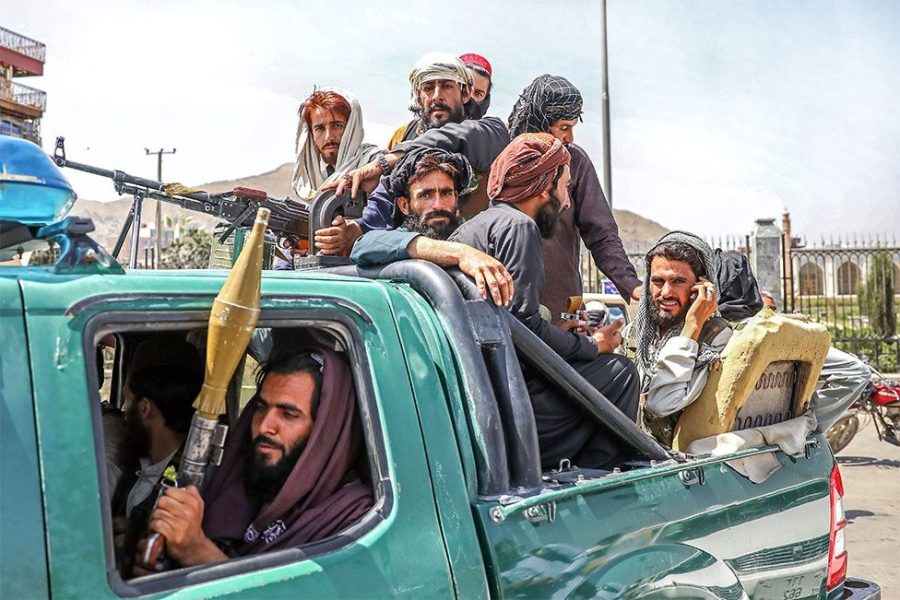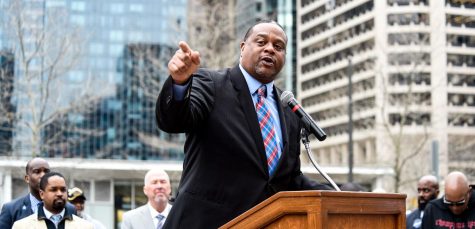Our Longest War: A Reflection on Afghanistan

The world collectively watched as the capital of Afghanistan, Kabul, fell into the hands of the Taliban again on August 15, 2021. The images coming out of Afghanistan were strikingly reminiscent of the Fall of Saigon in 1975. Images of Embassy workers being lifted from roof’s by helicopters have become the face of the American withdrawal from war, but how did we get here?
To grapple with the full reverberations of our withdrawal from Afghanistan we need to return to the roots of the conflict and understand why Americans became involved in the first place. On September 21, 2001, President George W. Bush addressed a joint session of Congress and finally gave the American people a group to hold responsible for the September 11th attacks. “The evidence we have gathered all points to a collection of loosely affiliated terrorist organizations known as Al Qaeda,” he stated in his address. That moment he gave the American people the perpetrator of the tragedy that had struck the country just 10 days earlier. Beginning our offensive against Al Qaeda, who were hiding in Taliban controlled Afghanistan, was just the U.S. putting its foot over the threshold of what would become America’s longest war. Continuing in his address President Bush delivered a list of demands to the Taliban Regime and condemned them for their harsh treatment of their citizens. Without mincing words: “By aiding and abetting murder, the Taliban regime is committing murder.” The leaders of Afghanistan rejected his demands and thus began the “war on terror.” Three days prior, Congress had passed the Authorization for Use of Military Force (AUMF), which effectively gave President Bush the green light to begin his military offensive against the perpetrators of the attacks on 9/11. Foreshadowing what would come, the President delivered a striking line: “Americans should not expect one battle, but a lengthy campaign unlike any other we have ever seen.” A “lengthy campaign” was exactly what would come for the next 20 years, but few Americans realized at that time how long this war would be.
How did we get from a “war against terror” to a 20-year occupation of another country? After effectively removing the Taliban from their positions in Afghanistan, the United States turned their mission from fighting the Taliban to fixing the damage the Taliban had done to the country. Billions of dollars were funneled into the country in efforts to rebuild schools, hospitals, public offices, and most importantly build a democratic government. Brown University researchers estimate 300 million dollars were spent every day for over 20 years in Afghanistan. Further adding to the United States’ involvement in the region, was the 2003 invasion of Iraq. Resources, troops, and money were moved from Afghanistan to Iraq to help topple the regime of Saddam Hussein. As a result of our shift of focus to Iraq, the Taliban began to rebuild their organization. Recognizing that the threat was emerging in Afghanistan, troops were again deployed to Afghanistan by President Barack Obama in 2009. The number of troops would reach 100,000 at its peak during this period.
In a massive victory for the American people, Osama Bin Laden was killed in his compound in Pakistan in May 2011. It was a relief for the American people knowing that the man who had orchestrated the attacks on 9/11 that had taken close to 3,000 American lives had finally been brought to justice. Also around this period, the Pentagon privately concluded that this war could not be won militarily and that peace in the region could only be possible through negotiation. Despite this conclusion, American troops would stay in the region for another ten years. To begin the close of this war, President Obama announced in June 2011 that American forces were beginning to be brought home and the task of security in Afghanistan would be handed over to the well-equipped Afghan army in 2014. With this in mind, efforts in Afghanistan shifted from conflict with the Taliban to training the Afghan army.
Despite the change in operation, President Donald Trump decided in 2017 that troops would stay on the ground to finish the war that had started 16 years earlier. Meanwhile behind the scenes, his administration negotiated deals with Taliban officials for a withdrawal of American troops.

Noticeably absent from these negotiations were the leaders of the current Afghan government. These negotiations with the Taliban would culminate with a signed deal that American troops would be out of the country by May 2021. The deal was fragile at best, as it included few ways to enforce the Taliban’s end of the bargain, and the process of creating the deal had excluded prominent Afghan officials. Trump’s loss in the 2020 election would hand the reins of withdrawal over to President Biden. Talks between the Taliban and the Afghan government failed to produce an agreement.
Forwarding to recent months, U.S. intelligence originally suggested that Afghanistan could fall to the Taliban in two to three years once international forces left the country. In reality the fall was much quicker than expected, since the U.S. intelligence did not foresee the immediate collapse of the Afghan army. Mostly laying down their weapons and allowing the Taliban to occupy their territory, the fight against the Taliban in the past four months has largely been waged by the Afghan warlords and their private militias. The idea that the Americans had weakened the Taliban in our 20-year fight with them is fundamentally wrong. While we did accomplish great steps in rebuilding the country that had imposed a brutal regime on their people, the Taliban had rebuilt themselves into the strongest version we have seen since originally toppling their dictatorship. All of this leads us to August 15, 2021, when Kabul fell into the Taliban’s hands. Afghanistan President Ashraf Ghani fled the country before the Taliban could reach him, as he feared execution in their hands. The Taliban captured an empty presidential palace and thus the organization was in control of the remnants of the Afghan government.
These developments led to a frantic evacuation of Americans, our allies, and the vital Afghan citizens we had relied on during our 20-year occupation. Vitally, U.S. forces held the Hamid Karzai International Airport, and the building became the headquarters of U.S. operations out of Afghanistan for the final weeks there. The effort to evacuate people from Afghanistan was chaotic and heartbreaking. Afghan citizens clung to planes begging for access to transportation to a life not under Taliban control. In the days after August 15th, the U.S. had time to organize and formalize its strategy for evacuating the necessary personnel from Afghanistan. Flights were constant from the airport and thousands were being evacuated daily. Operations were conducted to move people to the airport if they needed evacuation and were unable to safely travel there. Thousands were massed around the airport fences waiting to be checked by U.S. service members. As the crowds around the airport grew, the intelligence of a possible attack at the airport began to circulate. In particular, the Afghanistan offshoot of ISIS, named ISIS-K, were seen as likely perpetrators of a coming attack. Despite necessary precautions being taken to protect the brave U.S. soldiers in Afghanistan, a suicide bombing on August 26 outside the Abbey Gate took the lives of 182 people including 13 U.S. service members. The attack resulted in the first American casualties in Afghanistan since February 2020. President Biden vowed retaliation for the attacks and the U.S. military conducted strikes against the ISIS-K organization.
Despite the attack on American troops, the U.S. resumed operations and continued to evacuate thousands out of the country. By the end of their operations, over 116,000 people have been evacuated since August 14, 2021. On August 31st President Biden addressed the nation from the State Dining Room where he reflected on the conclusion on the 20-year war, and passionately defended his decision to withdraw from Afghanistan. President Biden assured the American people that he sees this as a massive success: “We completed one of the biggest airlifts in history, with more than 120,000 people evacuated to safety. That number is more than double what most experts thought was possible. No nation — no nation has ever done anything like it in all of history.” During his address to the nation, President Biden did not mention the thousands of Afghan citizens who had been left behind by the American government. The Afghan citizens, who were essential to our war effort for 20 years, possibly face persecution and death under the Taliban regime. In his remarks, he also stated: “After 20 years of war in Afghanistan, I refused to send another generation of America’s sons and daughters to fight a war that should have ended long ago.” A poll from the Pew Research Center shows that a majority of Americans agree with his decision to end America’s involvement in Afghanistan, but only 29% believe he handled the exit well. Regardless of polling Biden has completed a campaign promise and accomplished a momentous goal of the current and previous three administrations to end America’s longest war.

(REUTERS)
Where does America go from here? That question has yet to be answered by the government or the people. The U.S. government vitally needs to rebuild trust among our allies around the world. Efforts to assure other countries that we are still a reliable ally and will continue to protect and aid them are underway globally. The U.S. people need to reflect on the longest war in American history and deal with the ramifications. Will this signal a change in foreign policy by our government? It is hard to tell, and only our actions in coming conflicts will give us our answer. What we do know is that America has ended its longest war, and we should celebrate the brave American troops who protected our country for over 20 years in a war that changed focus continuously. This conclusion may not have been what the current administration hoped for but, for some, it is a conclusion to a war that has lasted far too long.











